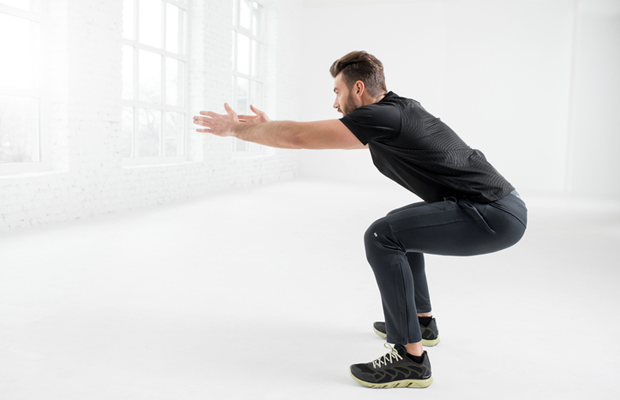NHS bosses say children should be vaccinated, as they could put relatives at risk of getting the flu.
Daily Archives: 26/11/2017
Vaginal mesh operations should be banned, says NICE
Implants can cut into the vagina – and some women have been left in permanent pain, unable to walk.
Home Office review over harassment at abortion clinics
Concerns about the tactics used by some protesters prompted the Home Office review.
Health24.com | 4 STDs you might already have
Cases of some sexually transmitted diseases (STDs) have reached an all-time high, according to a report from the Centers for Disease Control and Prevention (CDC).
From 2014 to 2015, there was a 6% increase in diagnosed cases of chlamydia and a 13% increase in gonorrhea.
The craziest part: The actual number of people with STDs is probably much higher than what the CDC is reporting, because many people have no clue they’re infected, the CDC says.
Read more: Thisguy discovered that too much drinking could give you an STD
That’s because STDs often show no noticeable symptoms.
“Sexually transmitted infections [STIs] are often called a ‘silent epidemic’ for the very reason that they don’t typically have outward signs,” says Debby Herbenick, PhD, MPH, a sex researcher at the University of Indiana.
This means that you could be infected and not even know it – and same goes for your partner.
These are four common STDs that might have already snuck up on you, and what you should do about it:
1. Sexually transmitted disease: gonorrhoea
This bacterial illness is spread through unprotected vaginal, oral or anal sex. As a result, it can cause infections in your genitals, rectum or throat.
Condoms are nearly 100% effective at preventing transmission of the disease, says Khalil Ghanem, MD, PhD, associate professor of medicine and infectious disease at Johns Hopkins University School of Medicine. (Dental dams can be protective if you’re giving oral sex to a woman.)
Read more: 9 problems with your crown jewels you can prevent
Signs of gonorrhoea: Women often don’t have any symptoms, says Herbenick. And when they do, the signs are usually mild and may mimic a bladder infection – meaning she may not know she’s infected, and there’s no way for you to tell during sex.
As for guys: If the infection is in your throat or rectum, you probably won’t have any symptoms, says Dr Ghanem.
If the bacteria is targeting your penis, you may see a greenish or yellowish penile discharge or a burning sensation when you pee, Dr Ghanem says.
Testicular pain is another possibility, although it’s rare. These problems usually creep up three to five days after an exposure.
Left untreated, gonorrhoea can cause something called epididymitis, an inflammation of your testicles that may lead to infertility.
Read more: Are STDs a deal breaker?
How to detect gonorrhoea: The CDC recommends routine annual screenings for men. But ask your doctor what’s right for you, since it may depend on risk factors like how often you have new partners, says Herbenick.
How to treat gonorrhoea: The good news is that gonorrhoea can usually be cured with antibiotics.
But some gonorrhoea strains are resistant to antibiotics, so make sure to follow up with your doctor to make sure all the bacteria has been killed, says Herbenick.
2. Sexually transmitted disease: chlamydia
Chlamydia, another bacterial infection, is spread through unprotected vaginal, oral or anal sex, says Dr Ghanem.
As with gonorrhoea, condoms are nearly 100% effective at preventing the spread. And if you’re giving oral sex to a woman, dental dams can reduce your risk.
Signs of chlamydia: Chlamydia rarely has noticeable symptoms in either women or men, says Herbenick.
On the off chance you do show signs of infection, the symptoms could include a penile discharge or burning when you pee, says Dr Ghanem. These problems usually creep up about a week after an exposure.
Severe infections in men that are not treated quickly can cause scarring in your urethra, making it more difficult to pee – and it may even require surgery.
Read more: The 10 worst things that could happen to your penis
How to detect chlamydia: The CDC recommends annual screening for gay or bisexual men. However, straight men should ask their doctors about testing as well.
How to treat chlamydia: Chlamydia can be cured with antibiotics.
3. Sexually transmitted disease: herpes
Genital herpes is caused by two viruses: Herpes simplex type 1 (HSV1), which usually affects your mouth as cold sores, and herpes simplex type 2 (HSV2), which mainly targets your genitals.
Sexual contact can spread your partner’s oral herpes to your genitals or her genital herpes to your mouth. The virus can be spread even if you – or your partner – don’t have any signs of it.
Wearing condoms can help protect you, but not completely: They’re only 80% effective for preventing herpes transmission, says Dr Ghanem. That’s partly because the virus can live on parts of your skin that aren’t covered by the condom.
Signs of herpes: Up to 70% of people infected with the virus don’t have symptoms, Dr Ghanem says.
If you do, you may notice blisters or ulcers on your genitals, or just feel some burning and itching.
When first infected, some patients will develop fevers, chills, swollen lymph nodes, headaches and fatigue.
Read more: Protect Your junk from catching herpes. It’s more common than most guys realise
How to detect herpes: Have your doctor take a look at any suspicious sores.
How to treat herpes: There’s no cure for genital herpes, but antiviral drugs can ease your symptoms, according to the CDC.
4. Sexually transmitted disease: human papilloma virus (HPV)
HPV, which comprises more than 150 related viruses, is the most common STD, according to the CDC.
There are two main types: low risk, which usually only cause genital warts, and high risk, which can lead to penile, anal and cancers. You can catch it via intercourse, oral sex or even skin-to-skin contact during sex.
Using condoms during sex can help reduce, but not eliminate, your chances of infection, says Michael Krychman, MD, executive director of the Southern California Center for Sexual Health.
Signs of HPV: “HPV almost never has visible symptoms,” says Herbenick.
Most strains don’t cause warts, and when they do, they’re often tiny – not like the “scare photos” from your high school’s health class
Read more: 5 nasty contagious skin conditions you can pick up at the gym
How to detect HPV: Unfortunately, there are no currently recommended tests to detect HPV in men, Dr Ghanem says.
How to treat HPV: While warts can be frozen off, removing the lesion doesn’t cure your infection. The warts can recur and the infection can still be spread, Dr Ghanem explains.
That’s why vaccination – which is recommended for straight men through age 21, or men who have sex with men through age 26 – and wearing condoms is especially important to help reduce your risk, says Dr Krychman.
This article was originally featured on www.mh.co.za
Image credit: iStock
NEXT ON HEALTH24X

NHS watchdog staff ‘told not to criticise’ Welsh Government
Staff working for NHS watchdogs facing the axe say they have been told not to embarrass the Welsh Government.
Health24.com | Why you should examine your testicles every month – and how you should do it
Finding a lump down there is one of the most terrifying things a guy can experience. But if the lump really is testicular cancer, catching it early could save your life.
Testicular cancer is one of the most curable forms of cancer, but your chances of beating it drop if it spreads before it’s diagnosed.
Read more: 5 ways you can make your sperm stronger right now
For example, 99% of men with localised testicular cancer – meaning it hasn’t spread from the testis – survive more than five years.
But the rate drops to 74% once it spreads to distant organs, according to data from the National Cancer Institute’s Surveillance, Epidemiology and End Results Program (SEER).
Here’s how to be proactive about your own testicular health.
Should you perform regular testicular self-exams?
Currently, the US Preventive Task Force recommends against routine testicular self-exams.
A big part of that is because they believe that guys might be unnecessarily stressed out by finding things on the self-exam that they think are harmful – but aren’t, says Dr Tobias Kohler, a spokesperson for the American Urological Association and an associate professor of urology at Southern Illinois University School of Medicine.
It’s possible that parts of your testicular anatomy – say, your spermatic cord or epididymis, the tube that connects your testicle to your vas deferens – might feel bumpy enough to freak you out, but they are perfectly normal, says Dr Kohler.
Read more: 10 things you didn’t know about your penis (and balls)
At your next visit with your doctor, ask him or her to point them out to you so you know what they feel like.
Once you have these structures squared away, you should be able to pick up on any potentially problematic changes in your testicles, says Dr Kohler.
That’s why many urology experts still believe it’s smart to check your balls.
In fact, Dr Kohler and Men’s Health urology advisor Dr Larry Lipshultz, both recommend you examine your testicles once a month. Here’s how to get started.
How to perform a testicular self-exam
The best place to give your testicles a once-over is in the shower.
That’s because the warmth will relax your scrotum and make it easier for you to feel any abnormalities, says Dr Nicholas Cost, a urologist and assistant professor at the University of Colorado.
Start at the top of your left testicle. Hold it between your thumb and fingers of both hands and gently roll it between your fingers as you move down. Repeat on the right side.
Be on the lookout for any hard lumps, smooth or rounded bumps, or unusual changes in the size, shape and consistency of your testicle, Dr Cost says.
Read more: 8 signs you have low testosterone levels
You might not be able to feel a mass itself, but it could make your testicle feel very firm.
It can be scary to find something weird, but just know that not all irregularities you find on yourself exam point definitively to testicular cancer, says Dr Kohler.
For instance, if your testicles feel like what can only be described as a bag of worms, you might have varicoceles or enlarged veins in your testicles.
You may also find innocuous bumps that are just cysts or the result of a testicular torsion, which is a painful condition where your testicle gets twisted and swells up.
Only your doctor can know for sure, though. So if you notice a bump or lump that feels different, suddenly appears, or just worries you, schedule an appointment with your urologist right away.
This article was originally featured on www.mh.co.za
Image credits: iStock

Health24.com | The six best exercises for new runners
We get it: You like to run, not spend hours in a gym. But strength training will help you run your best.
The following exercises will help you build strong, powerful and injury-resistant muscles that will help you power up hills, sprint across the finish and maintain good running form kilometre after kilometre.
Best part of all? These moves require no equipment, so you can do them anywhere.
Try to work them into your routine twice a week on easy run or rest days.
Squat
Stand as tall as you can with your feet spread shoulder-width apart. Lower your body as far as you can by pushing your hips back and bending your knees. Pause, then slowly push yourself back to the starting position. Do three sets of 10 reps.

Watch out for: Make sure your front knee doesn’t extend past your toes. Keep your upper body “tall” – don’t lean forward.
Make it harder: Turn it into a jump squat. Squat down and then explode up as high as you can and land softly.
Lunge
Stand with your feet staggered, your right foot forward. Squat down so that your left knee is lowered toward, but not touching, the floor. Lower down to a count of two, and rise back up to a count of two. Repeat on the other leg. Do three sets of 10 reps.

Watch out for: Make sure your front knee doesn’t extend past your toes. Keep your upper body “tall” – don’t lean forward.
Make it harder: Do jumping lunges. Step forward with your left foot and lower into a lunge. Jump straight up off the floor, swinging your arms forward and switching your legs in midair, like scissors. Land in a lunge with your right leg forward.
Bridge
Lie on your back with your knees bent, arms out and palms down. Draw your belly button in, and lift your hips up by pressing your feet into the ground. Contract your core, your glutes, and then your hamstrings in this position. Hold for three to five seconds. Do three sets of 10 reps.

Watch out for: Keep your hips level – don’t let one side dip – while raised.
Make it harder: Do a one-legged bridge. Raise one leg off the ground. While keeping that leg in the air, drive through the heel of your other foot, raising your hips and glutes off the ground. Return to the starting position and repeat. Do the same move on your other side.
Plank
Starting at the top of a pushup position, bend your elbows and lower yourself down until you can shift your weight from your hands to your forearms. Your body should form a straight line. Contract your abdominals and hold for 60 seconds. If you can’t make it to 60 seconds, hold for 5 to 10 seconds and rest for 5 seconds, continuing for 1 minute.

Watch out for: Don’t drop your hips or raise your butt.
Make it harder: Do a rolling plank. Begin in plank position. Then rotate to your left and do a side plank. Hold for 10 seconds, then rotate into a right-side plank and hold for another 10 seconds. Return to plank and repeat.
Mountain climbers
Get into a pushup position. Bring your right knee in, then extend it back. Bring your left knee in, then extend it back. Alternate legs and move as fast as you can while maintaining good form. Do three sets of 10 reps counting right and left as one left.

Watch out for: Your body should form a straight line from your head to your ankles. Don’t change your lower-back posture as you lift your knee.
Superman
Start face down on the floor, with your arms and legs extended out front. Raise your head, your left arm, and right leg about 12cm off the floor. Hold for three counts, then lower. Repeat with your right arm and left leg. Do up to 10 reps on each side.

Watch out for: Don’t raise your shoulders too much.
Make it harder: Lift both arms and legs at the same time.
This article was originally featured on www.runnersworld.co.za
Image credits: iStock
NEXT ON HEALTH24X




